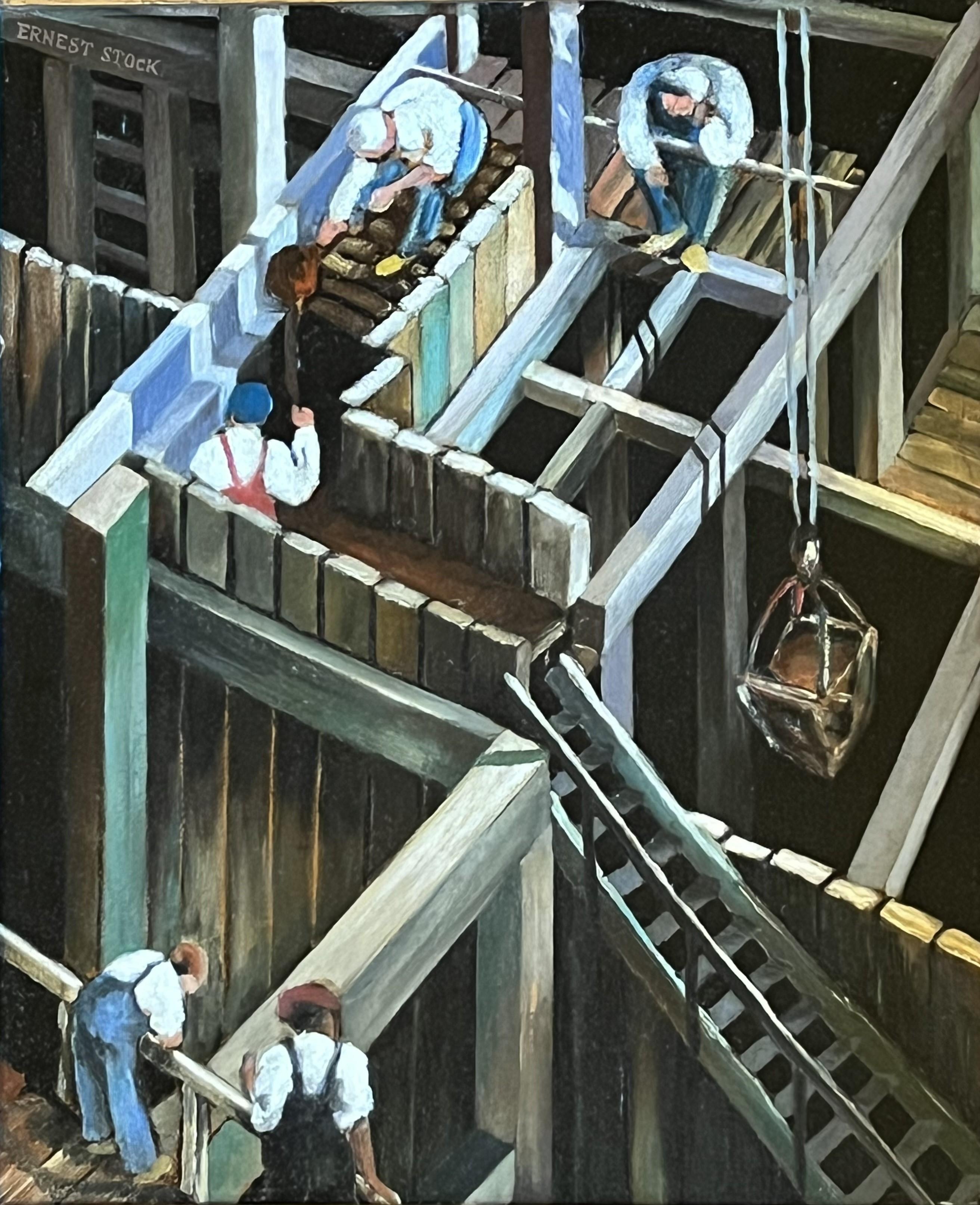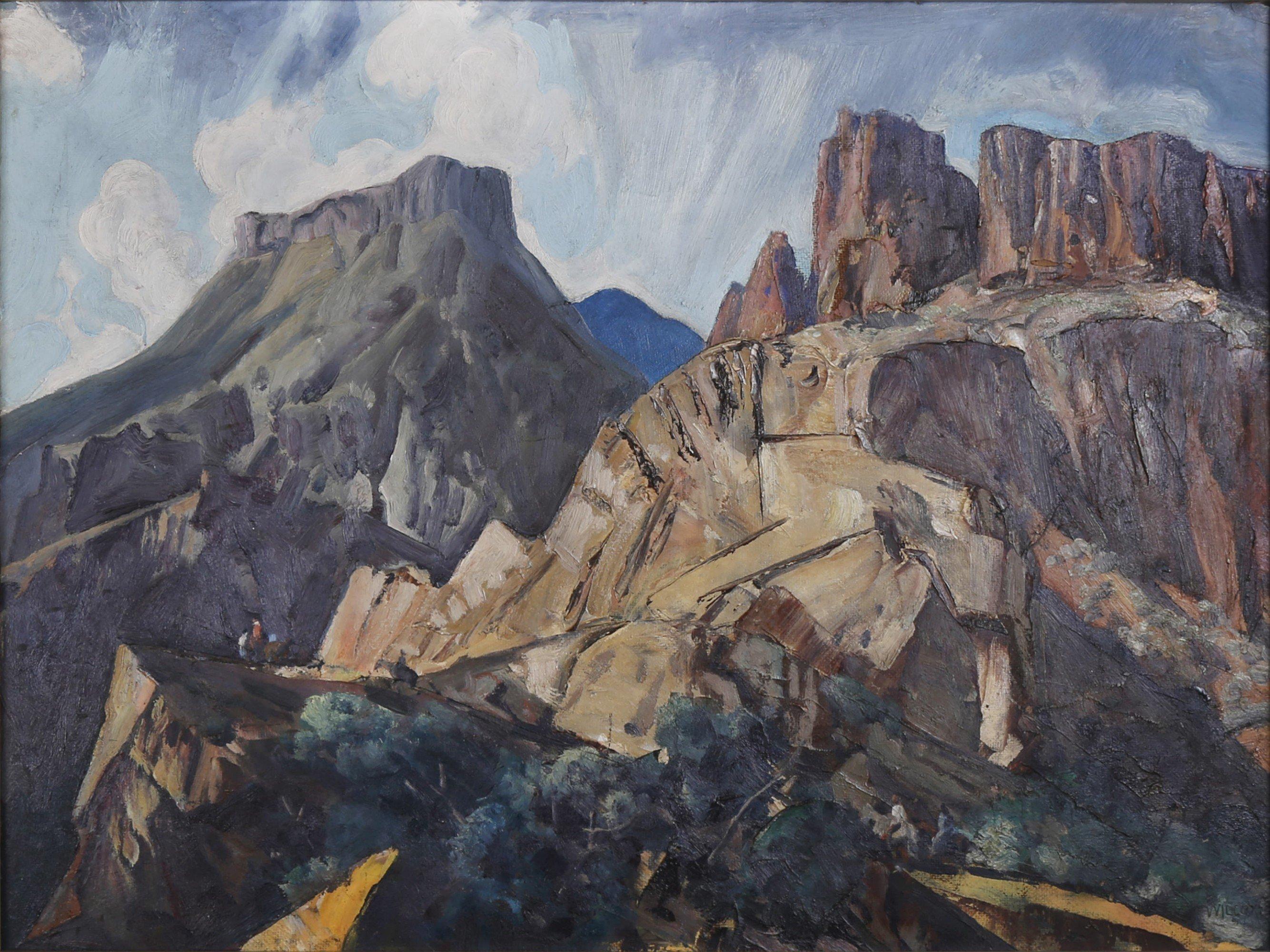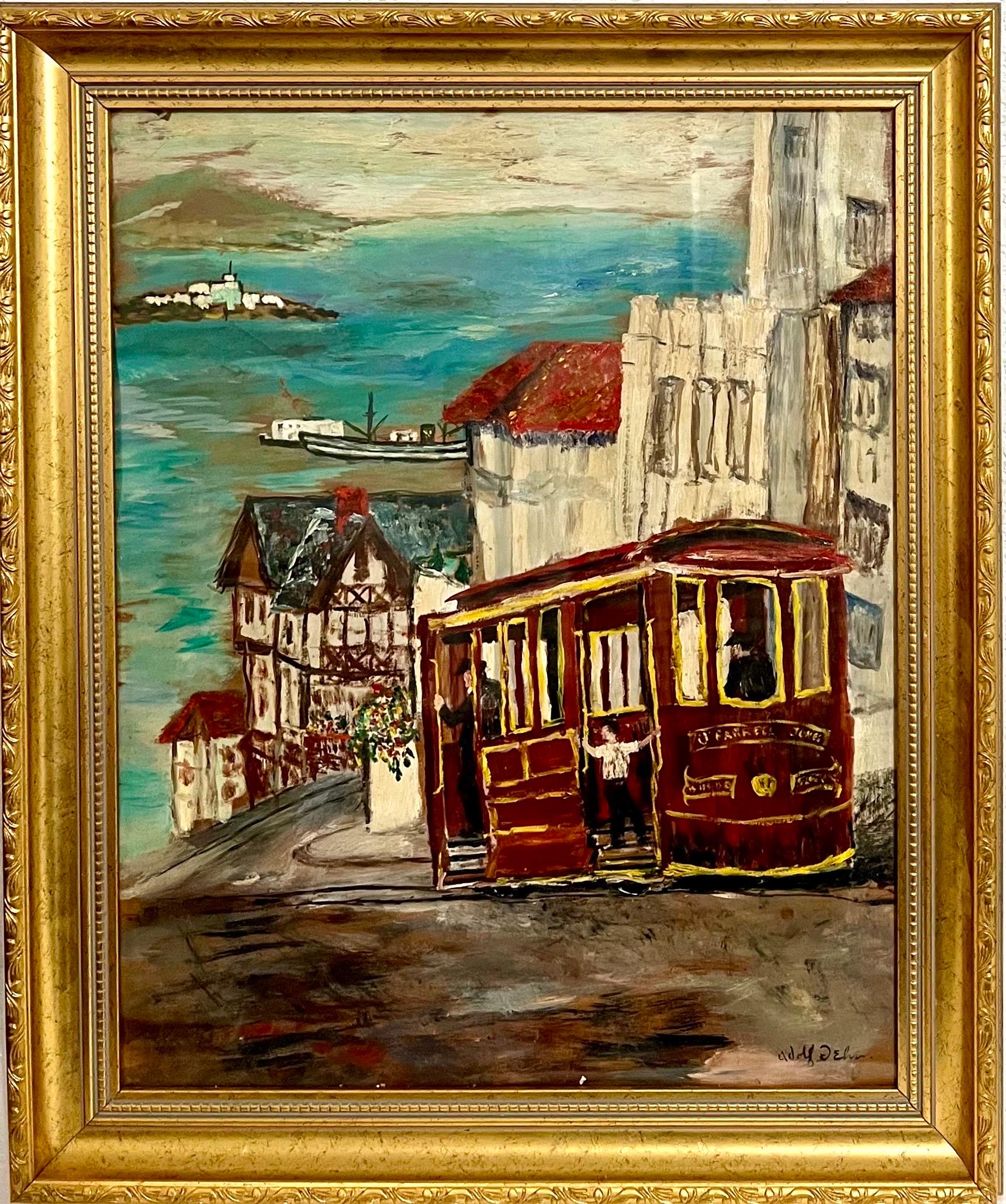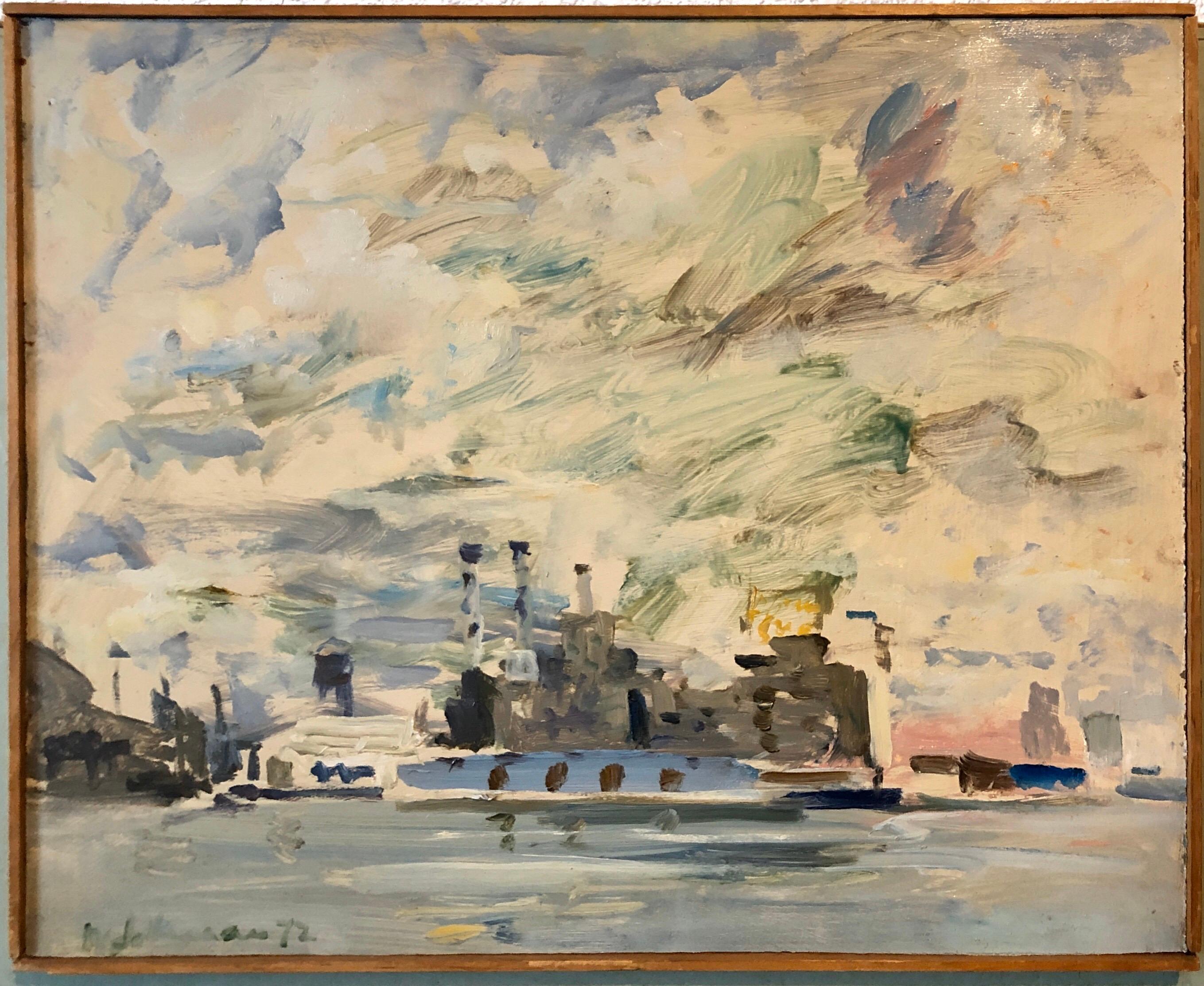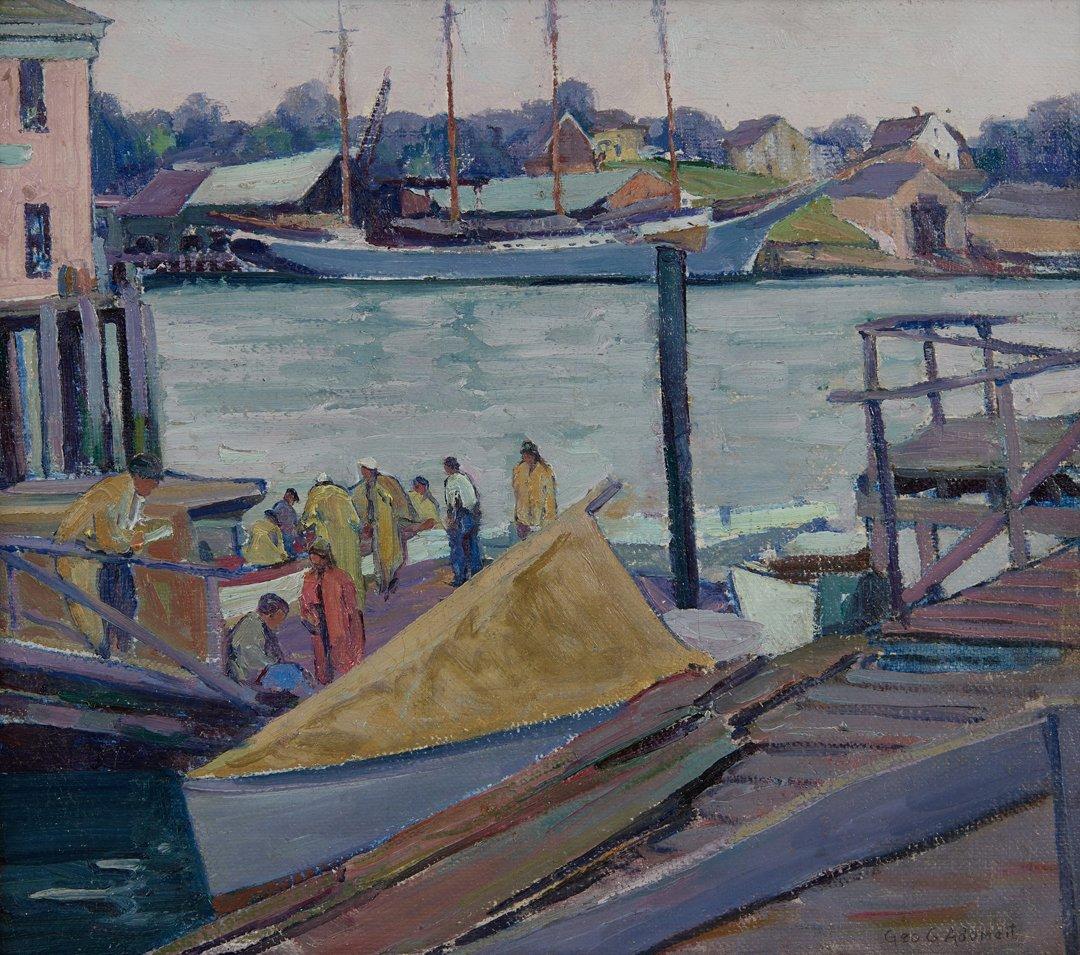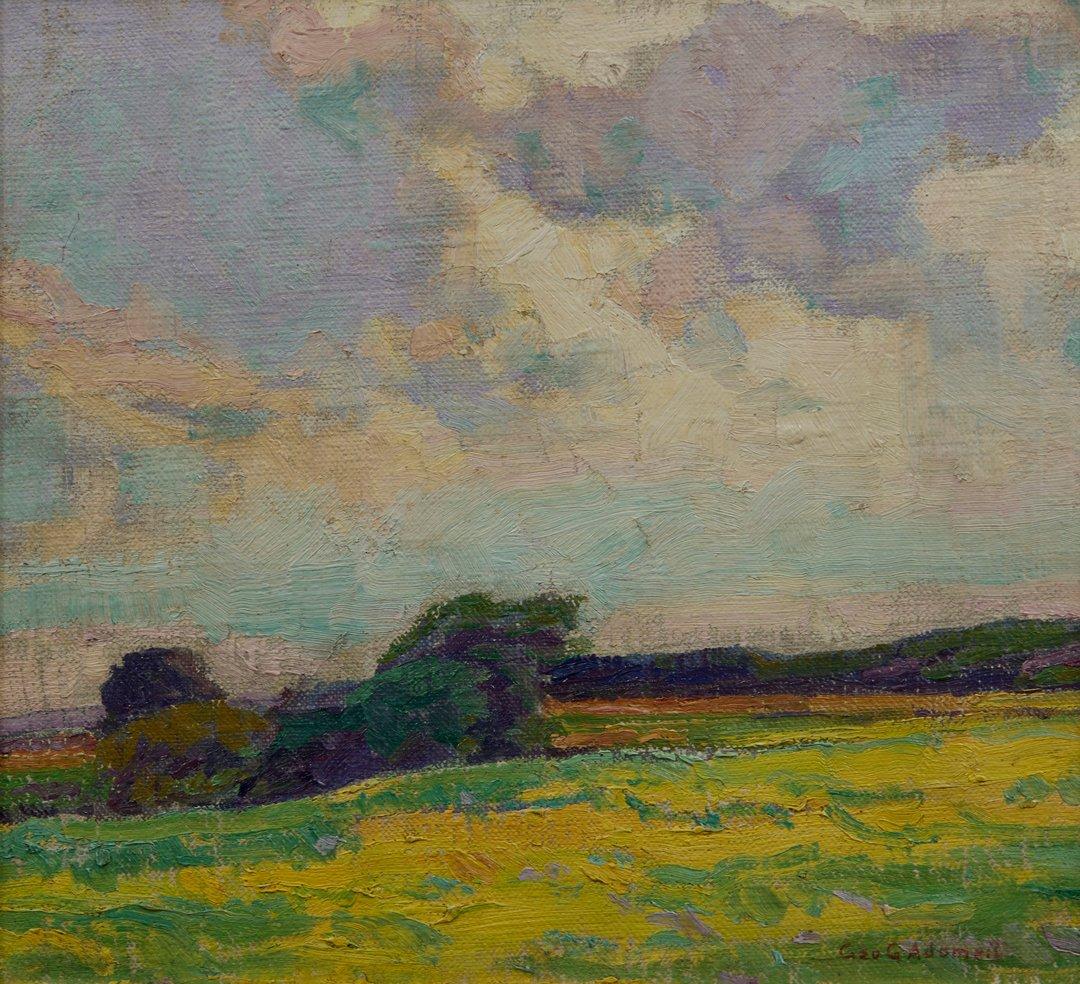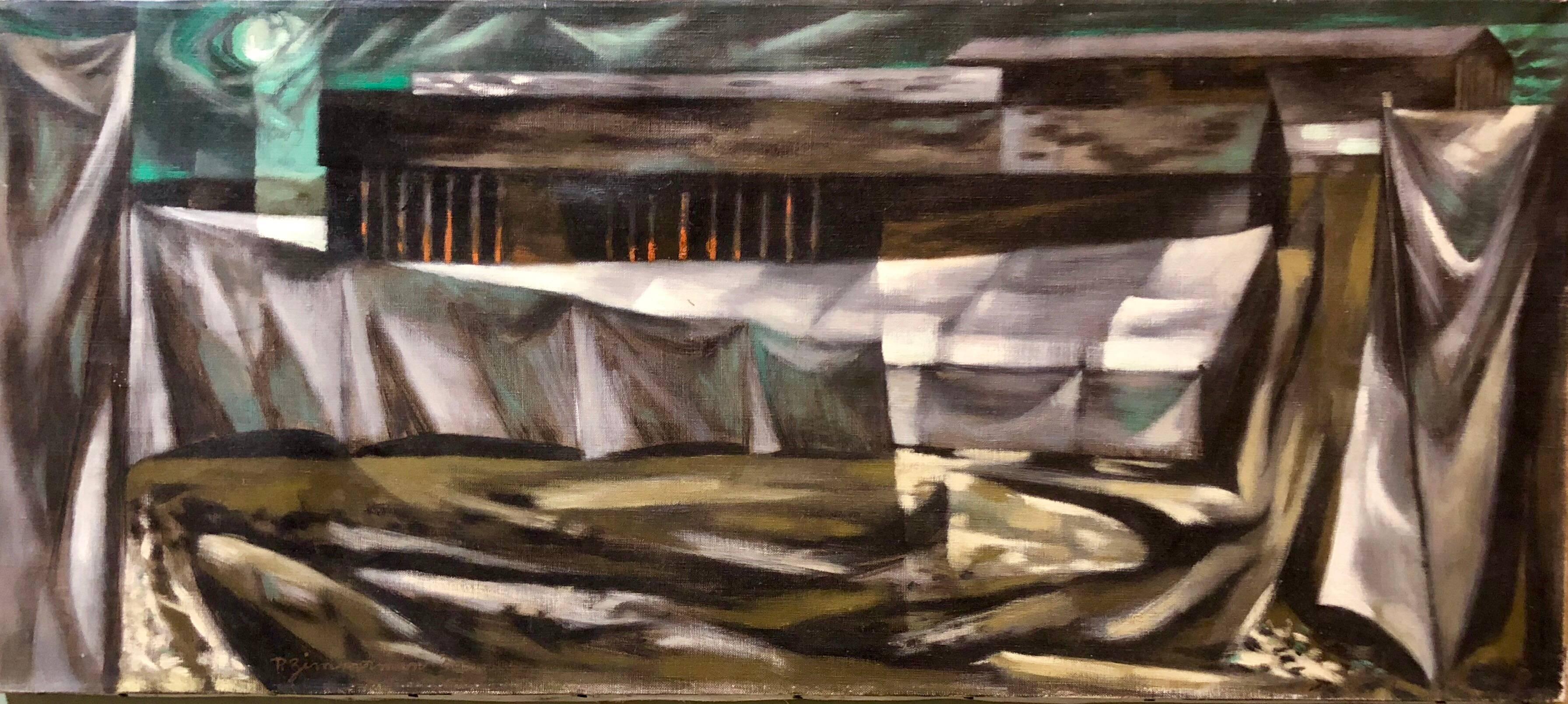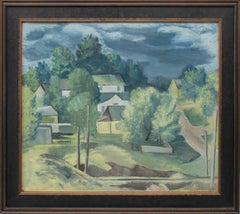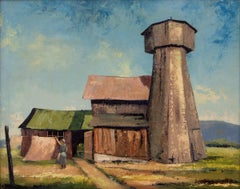
Small Church, Taos (New Mexico)
View Similar Items
Want more images or videos?
Request additional images or videos from the seller
1 of 10
Mildred PneumanSmall Church, Taos (New Mexico)
About the Item
- Creator:Mildred Pneuman (1899 - 1989, American)
- Dimensions:Height: 13.5 in (34.29 cm)Width: 14.25 in (36.2 cm)Depth: 1.25 in (3.18 cm)
- Medium:
- Movement & Style:
- Period:
- Condition:very good vintage condition.
- Gallery Location:Denver, CO
- Reference Number:Seller: DCG 215541stDibs: LU2731836143
About the Seller
5.0
Platinum Seller
These expertly vetted sellers are 1stDibs' most experienced sellers and are rated highest by our customers.
Established in 1979
1stDibs seller since 2013
264 sales on 1stDibs
Typical response time: 5 hours
More From This SellerView All
- Colorado Hill Town with Storm Clouds, 1940s Modernist Landscape, Green BlueBy Paul Kauver SmithLocated in Denver, COWPA era signed framed modernist oil painting of houses and trees in summer with a stormy cloud in Colorado by Paul K. Smith in shades of green, ...Category
1940s American Modern Landscape Paintings
MaterialsOil
- In Soquel, California, 1950s Farm Landscape with Silo, Blue, Green, Gold, GrayBy Jon BlanchetteLocated in Denver, CO"In Soquel (California)" is an original oil on board painting by Jon Blanchette (1908-1987) circa 1955. Farm landscape with figure hanging laundry and silo, painted in colors of blue...Category
1950s American Modern Landscape Paintings
MaterialsBoard, Oil
- Adobe Church, New Mexico, 1940s Modernist Southwestern Landscape Oil PaintingBy Paul Kauvar SmithLocated in Denver, COVintage 1930s - 1940s oil painting of an adobe church in New Mexico with a brilliant blue sky and clouds (likely Rancho de Taos), circa 1940. Painted by Denver modernist, Paul K...Category
1940s American Modern Landscape Paintings
MaterialsCanvas, Oil
$2,760 Sale Price20% Off - Near Watsonville, California, Mid Century Landscape Oil Painting House TreesBy Jon BlanchetteLocated in Denver, COMid 20th Century oil on artist board of a white house near Watsonville, California. 1950s landscape painting with house and trees. Presented in a...Category
Mid-20th Century American Modern Landscape Paintings
MaterialsOil, Board
- Storm Over Victor (Colorado Mountain Town), 1940s WPA Era Landscape Oil PaintingLocated in Denver, COOil on board painting by George Vander Sluis (1915-1984) titled Storm Over Victor (Colorado Mountain Town) from 1946. WPA Era Mountain Landscape wi...Category
1940s American Modern Landscape Paintings
MaterialsOil, Board
- Victor, Colorado, 1940s Modernist Mountain Landscape with Town, Mining TownBy Martyl Suzanne Schweig LangsdorfLocated in Denver, CO'Victor, Colorado', 1942 oil painting on masonite by Martyl Suzanne Schweig (1918-2013). This classic Colorado landscape was painted overlooking a ghost town with the Rocky Mountains visible across the background, completed in rich tones of green, gold, and brown. This painting was completed on a trip with fellow artist, Adolph Dehn...Category
1940s American Modern Landscape Paintings
MaterialsMasonite, Oil
You May Also Like
- Subway ConstructionLocated in Los Angeles, CAThis painting is part of our exhibition American Coast to Coast: Artists of the 1930s Subway Construction, c. 1928, oil on board, 19 x 15 ¾ inches, signed upper left, artist and title verso; exhibited: 1) 12th Annual Exhibition of the Society of Independent Artists, The Waldorf Astoria, New York NY, from March 9 to April 1, 1928, no. 864 (original price $250) (see Death Prevailing Theme of Artists in Weird Exhibits, The Gazette (Montreal, Quebec, Canada), March 8, 1928); 2) Boston Tercentenary Exhibition Fine Arts and Crafts Exhibition, Horticultural Hall, Boston MA, July, 1930, no. 108 (honorable mention - noted verso); 3) 38th Annual Exhibition of American Art, Cincinnati Art Museum, Cincinnati, OH, June, 1931 (see Alexander, Mary, The Week in Art Circles, The Cincinnati Enquirer, June 7, 1931); and 4) National Art Week Exhibition [Group Show], Montross Gallery, New York, New York, December, 1940 (see Devree, Howard, Brief Comment on Some Recently Opened Exhibitions in the Galleries, The New York Times, December 1, 1940) About the Painting Ernest Stock’s Subway Construction depicts the excavation of New York’s 8th Avenue line, which was the first completed section of the city-operated Independent Subway System (IND). The groundbreaking ceremony was in 1925, but the line did not open until 1932, placing Stock’s painting in the middle of the construction effort. The 8th Avenue line was primarily constructed using the “cut and cover” method in which the streets above the line were dug up, infrastructure was built from the surface level down, the resulting holes were filled, and the streets reconstructed. While many artists of the 1920s were fascinated with the upward thrust of New York’s exploding skyline as architects and developers sought to erect ever higher buildings, Stock turned his attention to the engineering marvels which were taking place below ground. In Subway Construction, Stock depicts workers removing the earth beneath the street and building scaffolding and other support structures to allow concrete to be poured. Light and shadow fall across the x-shaped grid pattern formed by the wooden beams and planks. It is no surprise that critics reviewing the painting commented on Stock’s use of an “interesting pattern” to form a painting that is “clever and well designed.” About the Artist Ernest Richard Stock was an award-winning painter, print maker, muralist, and commercial artist. He was born in Bristol, England and was educated at the prestigious Bristol Grammar School. During World War I, Stock joined the British Royal Air Flying Corps in Canada and served in France as a pilot where he was wounded. After the war, he immigrated to the United States and joined the firm of Mack, Jenny, and Tyler, where he further honed his architectural and decorative painting skills. During the 1920s, Stock often traveled back and forth between the US and Europe. He was twice married, including to the American author, Katherine Anne Porter. Starting in the mid-1920s, Stock began to exhibit his artwork professionally, including at London’s Beaux Arts Gallery, the Society of Independent Artists, the Salons of America, the Cincinnati Art Museum, the Whitney Studio and various locations in the Northeast. Critics often praised the strong design sensibility in Stock’s paintings. Stock was a commercial illustrator for a handful of published books and during World War II, he worked in the Stratford Connecticut...Category
1920s American Modern Figurative Paintings
MaterialsOil
- Riders Through the Canyon, Mid-Century Western LandscapeBy Frank WilcoxLocated in Beachwood, OHRiders Through the Canyon, c. 1941 Oil on board Signed lower right 24 x 32.25 inches "Also, on this second trip the significant colors of the Southwest became apparent - the prep...Category
1940s American Modern Landscape Paintings
MaterialsOil
- Till the Clouds Roll By 1945 Frank Sinatra Mid Century Modern Hollywood Film WPABy Richard WhorfLocated in New York, NYTill the Clouds Roll By 1945 Frank Sinatra Mid Century Modern Hollywood Film WPA TILL THE COULDS ROLL BY (Film Set), oil on canvas, 20 x 24 inches signed “Richard Whorf” lower right and signed and dated on the verso “R. Whorf/ Dec. 21, 1945. Frame by Hendenryk. ABOUT THE PAINTING This painting is from the collection of Barbara and Frank Sinatra, dated December 21, 1945 (just nine days after Frank Sinatra’s 30th birthday), and depicts the Metro-Goldwyn-Mayer Culver City backlot during the filming of Till the Clouds Roll By, the direction of the film having been taking over by Richard Whorf in December 1945. It is not presently clear if Whorf gave the Sinatras this painting as a gift, as the presence of the Dalzell Hatfield Galleries label on the verso indicates the painting may have been sourced there. Frank and Nancy Sinatra acquired a number of works from Dalzell Hatfield Galleries during the 1940’s, or perhaps they framed it for the couple. Sinatra performed “Old Man River’ in the film. Sinatra and June Allyson are depicted in the center of the painting. PROVENANCE From the Estate of Mrs. Nancy Sinatra; Dalzell Hatfield Galleries, Ambassador Hotel, Los Angeles. An image of the Dalzell Hatfield label and the back of the original frame (which we replaced with a stunning Heydenrk frame) are attached. Nancy Sinatra was Fran's first wife. Nancy Rose Barbato was 17 years old when she met Frank Sinatra, an 18-year-old singer from Hoboken, on the Jersey Shore in the summer of 1934. They married in 1939 at Our Lady of Sorrows Church in Jersey City where Frank gave Nancy a recording of a song dedicated to her titled "Our Love" as a wedding present. The young newlyweds lived and worked in New Jersey, where Frank worked as an unknown singing waiter and master of ceremonies at the Rustic Cabin while Nancy worked as a secretary at the American Type Founders. His musical career took off after singing with big band leaders Harry James and Tommy Dorsey...Category
1940s American Modern Landscape Paintings
MaterialsCanvas, Oil
- San Francisco Cable Car WPA Artist Adolf Dehn Modernist Art Gouache Oil PaintingBy Adolf DehnLocated in Surfside, FLADOLF ARTHUR DEHN (American, 1895-1969) San Francisco Bay Area street scene, with Trolley, Streetcar, Cable Car with bay and Alcatraz Island in background. Hand signed LRC. Sight 19" x 15", overall 23" x 19". Adolf Dehn (November 22, 1895 – May 19, 1968) was an American artist known mainly as a lithographer. Throughout his artistic career, he participated in and helped define some important movements in American art, including regionalism, social realism, and caricature. A two-time recipient of the Guggenheim Fellowship, he was known for both his technical skills and his high-spirited, droll depictions of human foibles. Adolph Dehn was born in 1895 in Waterville, Minnesota. He began creating artwork at the age of six, and by the time of his death had created nearly 650 images. Dehn went to the Minneapolis School of Art (known today as the Minneapolis College of Art and Design), where he met and became a close friend of Wanda Gag. In 1917 he and Gág were two of only a dozen students in the country to earn a scholarship to the Art Students League of New York. He was drafted to serve in World War I in 1918, but declared himself a conscientious objector and spent four months in a guardhouse detention camp in Spartanburg, SC and then worked for eight months as a painting teacher at an arm rehabilitation hospital in Asheville, NC. Later, Dehn returned to the Art Students League for another year of study and created his first lithograph, The Harvest. In 1921 Dehn's lithographs were featured in his first exhibition at Weyhe Gallery in New York City. From 1920 to 1921 in Manhattan, he was connected to New York's politically left-leaning activists. In 1921, he went to Europe. In Paris and Vienna he belonged to a group of expatriate intellectuals and artists, including Andrée Ruellan, Gertrude Stein, and ee cummings...Category
1930s American Modern Figurative Paintings
MaterialsOil, Gouache
- Spring , Modernist Native American Ceremonial Scene and Cultural CommentaryLocated in Doylestown, PA"Spring" is a 25 x 30 inches, oil on canvas painting by American modernist and surrealist, female artist Peter Miller. The work is signed and titled on verso, and painted in a vibran...Category
1940s American Modern Landscape Paintings
MaterialsCanvas, Oil
- 1972 Gestural Oil Painting Boat in Harbor Figural Abstraction Raoul MiddlemanBy Raoul MiddlemanLocated in Surfside, FLRaoul Middleman (born 1935 in Baltimore, Maryland) is an American painter. Middleman has been a member of the Maryland Institute College of Art faculty since 1961. American University Museum at the Katzen Center has described Middleman as a "Baltimore maestro [whose] nudes are not pretty—they are sagging, dimpled, and real. His cityscapes reveal the underbelly of post-industrial rot, his narrative paintings give contemporary life to his personal obsessions. They are intelligent, messy, and utterly masterful." From an interview with RM "I was doing abstract art. Then Roy Lichtenstein came around, and I wanted to be current. I remember Grace Hartigan said, “You’ve gotta go to New York, seize destiny by the hand.” My friend Jon Schueler took my slides up to Eleanor Ward, who had the Stable Gallery. My Pop art paintings were discovered. I moved to New York into Malcolm Morley’s old loft down on South Street. Agnes Martin was upstairs... People who interest me come from different quarters. I knew guys around Schueler, like B.H. Friedman. But I also knew the Pop world pretty well – Al Hansen, Richard Artschwager, Lichtenstein. I became friends with Raoul Hague and I rented a place in Port Jervis, New York. I started doing my first landscapes up there. I thought making landscapes was the dumbest thing you could do. You got flies, insects, cow pies, humidity. But I loved it... I went down to the meetings of the Figurative Alliance. I met my friends there — Paul Resika, Paul Georges, Rosemarie Beck...Category
1970s American Modern Landscape Paintings
MaterialsOil, Board
